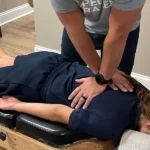Accidents can happen at any time, and a knocked-out tooth is one of those unexpected dental emergencies that can leave you feeling anxious and unsure of what to do. Whether it occurs during a sporting event, a fall, or any other unfortunate incident, knowing the right steps to take immediately can make a significant difference in saving the tooth and preserving your oral health. In this article, we will outline the immediate steps to handle a knocked-out tooth effectively.
-
Stay Calm and Act Quickly:
The first and most crucial step is to stay calm and act swiftly. Panic can cloud your judgment, and time is of the essence when it comes to saving a knocked-out tooth. Take a deep breath, assess the situation, and focus on the task at hand.
-
Retrieve the Tooth:
Locate the knocked-out tooth immediately. Handle it only by the crown (the top part visible in the mouth) and avoid touching the root to prevent further damage.
-
Rinse Gently:
If the tooth is dirty, gently rinse it with milk or a saline solution. Do not use water, soap, or any cleaning agents, as they can harm the delicate root cells that are essential for successful re-implantation.
-
Attempt to Re-Implant:
If possible, try to re-implant the tooth into its socket. Hold the tooth by the crown and gently push it back into place. Once in position, bite down on a clean cloth or gauze to keep it in place until you can reach a dentist.
-
Preserve the Tooth:
If re-implantation is not possible, preserve the tooth properly to increase its chances of survival. Place it in a container of milk, saline solution, or the person’s saliva. The goal is to keep the tooth moist and avoid drying it out.
-
Seek Immediate Dental Care:
Regardless of whether you were able to re-implant the tooth or not, it’s crucial to seek immediate dental care. Call your dentist or visit the nearest emergency dental clinic as soon as possible. Dental professionals possess the knowledge and equipment necessary to handle this situation effectively.
-
Manage Pain and Bleeding:
If there is bleeding from the socket, apply gentle pressure with a clean gauze or cloth to control it. Over-the-counter pain relievers can be used to manage pain, but avoid placing aspirin or any medication directly on the affected area, as it may cause irritation.
-
Avoid Certain Actions:
To maximize the chances of saving the tooth, avoid specific actions that could harm the tooth or the surrounding area. Refrain from touching the root of the tooth, scrubbing it clean, or wrapping it in a tissue. Additionally, do not attempt to force the tooth back into the socket if it doesn’t easily fit.
-
Use a Cold Compress:
If there is swelling, apply a cold compress to the affected area for 15-minute intervals. This can help reduce swelling and alleviate discomfort.
Conclusion
Remember, time is of the essence when dealing with a knocked-out tooth. Acting promptly and following these immediate steps can significantly increase the likelihood of saving the tooth and promoting a successful recovery. Always seek professional urgent dental care after the emergency to ensure proper treatment and long-term oral health.

 Lifestyle Changes That Could Help Lessen the Effects of Alzheimer’s
Lifestyle Changes That Could Help Lessen the Effects of Alzheimer’s  Bodyweight Basics: The Best No-Equipment Exercises for Beginners
Bodyweight Basics: The Best No-Equipment Exercises for Beginners  THC Gummies vs THC Tinctures – Which works faster?
THC Gummies vs THC Tinctures – Which works faster?  What Are the Best Treatment Options for Diabetic Retinopathy?
What Are the Best Treatment Options for Diabetic Retinopathy?  Is it Safe to Get a Massage While Pregnant?
Is it Safe to Get a Massage While Pregnant?  Maximize Your Fitness Goals: How a Personal Trainer Can Help You Achieve Lasting Results
Maximize Your Fitness Goals: How a Personal Trainer Can Help You Achieve Lasting Results  Maximize Savings and Benefits with the Right Health Insurance Services
Maximize Savings and Benefits with the Right Health Insurance Services  What is the purpose of a spinal adjustment?
What is the purpose of a spinal adjustment?  Understanding The Different Types Of Incontinence And How Home Care Can Help
Understanding The Different Types Of Incontinence And How Home Care Can Help 